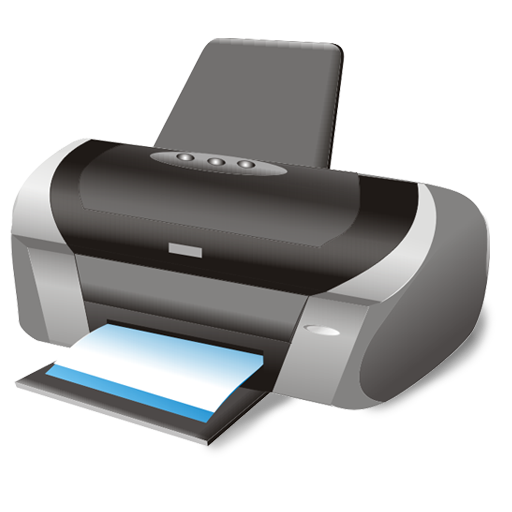

Month: October 2019
Welcome to the Busybird blog, where you can find helpful articles, updates, industry news and more. Make sure you stay up to date by signing up to our newsletter below.
The Publishing Landscape
October 24, 2019We periodically put up blogs like this one to educate authors about the publishing landscape.
There are two legitimate streams of publishing:
- Traditional Publishing: you submit to a publisher. They will judge if (they believe) your book is worth publishing. If they accept you, they take all the financial risk to publish you. They will sign you to a contract, and oversee (and pay for) editing, design, printing, and marketing. You might get paid an advance (a small sum of money), or an advance against the royalties (a small sum of money that royalties have to pay off before you see more royalties) and royalties (a small percentage of each sale). For a new author, an advance might be around $1,000 – 5,000. Royalties uniformly will be around 7.5%, which means you get about $2 per book sold.
- Self-Publishing: you organise production of your book, and pay for whatever services you require. But you receive 100% of royalties (although if you get your book in bookstores, they will take a cut). You also keep 100% of the rights.
The murky model is the one where a publisher might claim they have an innovative new business model, and that they’ll share the cost of publication with you. The trade-off, they’ll tell you, is that you’ll get 50% of royalties, rather than just the 7.5%. Wow! That sounds awesome, right? And what makes all this so much more attractive is they tell you that your book is great, and that the market needs a book like yours.
The truth is these publishers will tell you anything to get your money. It’s doubtful they invest anything in your manuscript, other than hiring subcontractors (such as an editor and designer) who they underpay to perform their respective service. And yet this publisher gets to keep 50% of your royalties and 50% of your rights. That means if a traditional publisher wanted to pick you up, or if a film company wanted to turn your book into a film, this publisher would get a cut.
Most people want a traditional publishing deal. The benefits are the validation – a publisher telling you that your book is good enough for the market – and that they do everything to make your book a reality. As an aside, if a traditional publisher rejects you, it doesn’t necessarily mean your book isn’t good enough. Traditional publishers get it wrong all the time. The best example is Harry Potter, which was rejected umpteen times before it made it.
Self-publishing is becoming a viable alternative, as evolving technology has made it accessible and inexpensive. You could produce a book that looks identical to a book that comes out of a traditional publisher. The Martian by Andy Weir and Still Alice by Lisa Genova were both self-published, and became bestsellers, then became films with A-list actors. The difficulty with self-publishing is finding somebody you can trust, and who’ll guide you through the process.
These are the two routes. But here’s a much simpler way to break it down:
- Traditional Publishing: you pay nothing, the publisher oversees the production, and you get a small return.
- Self-publishing: you pay for everything, and you get 100% return, and keep 100% of the rights.
There is no other path. There is no in-between. The moment you pay anything to publish, you’re self-publishing. If you’re self-publishing, you should retain 100% of your royalties and 100% of your rights. There’s no rationale this type of publisher can offer you that validates any claim to these.
Now why do we blog periodically about this?
Because people are getting misled. People are getting ripped-off. People are spending hard-earned money because they’re being lied to and promised things (e.g. bestsellers, film adaptations) that no publisher can guarantee. Multimillion-dollar traditional publishers with all their resources can only take educated guesses at how a book will fare, so anybody else who makes these claims is a liar.
We get authors who think that all publishers operate under the same model (that’s exactly what they want you to think). We hear so many horror stories. We get authors ringing us in tears. We get authors asking if these sorts of deals are normal. We have authors berating themselves for their ignorance.
And it’s frustrating to see good people treated this way.
We have a lot of experience here. Our mandate is to help educate authors. We don’t want you being misled or ripped off. We want you to understand the landscape.
Whoever you publish with, it should be rewarding and gratifying and pleasurable.
So beware of the dangers.
Connection and Journey
October 10, 2019
Why do we connect to certain stories?
The simple answer is because they reflect our own lives.
JD Salinger’s The Catcher in the Rye is about a disenfranchised teenager trying to find his place in the world. It speaks to teenagers who are angry, rebellious, and displaced. Here is a novel that champions them. This is why The Catcher in the Rye became a classic when it was first published in 1951, and why it’s remained popular to this day: the world might change, technology can evolve, but teenagers will always go through certain phases in life. As adults, we’ll remember this dissonance in ourselves. The Catcher in the Rye speaks directly to this.
Think about your favourite book. Is the relationship between you and the book that synonymous?
The likely answer is an emphatic no.
John Green’s The Fault in Our Stars is about two teenage cancer-sufferers who find strength in one another. Paula Hawkins’s The Girl on the Train is about an alcoholic woman on a train who looks out the window and sees a crime. Gillian Flynn’s Gone Girl is about a duplicitous husband and a scheming, psychotic wife who will go to any lengths to save her marriage. Bret Easton Ellis’s American Psycho is about a serial killer. JK Rowling’s Harry Potter is about a child wizard fated to oppose the evil Voldermort. Ian Fleming’s James Bond features a spy who is licensed to kill constantly saving the world from criminal masterminds.
How many of those characters and circumstances reflect our lives?
If we were to only connect to books whose characters and/or events reflected our own lives, our reading CV would be thin. Basic criteria – such as the protagonist’s gender and age – would immediately exclude us. From there, other dissimilarities would amass.
Often, we connect to characters because their journey speaks to our own journey in life. Not one of us wields magic or is fated to fight an evil wizard, but Harry Potter’s struggle can reflect our own struggles to get somewhere against overwhelming odds, and the challenges we need to conquer. We might not be teenagers battling cancer (as occurs in The Fault in Our Stars), but we may connect with that fight to find connection and truth in a fragile environment growing increasingly delicate.
As we move through life, we’re taking our own journey. Those journeys face their own difficulties. We might endure jobs we don’t like, we might suffer tumultuous relationships, we might brave health challenges, etc. – we’re constantly trying to improve our lot.
This is the beauty of books. Often, the facts are garnish to what’s going on in the story. It’s about the journey – the struggles characters face to better their circumstances.
This is something we all share, and why we can connect with stories that may have nothing to do with our lives.
They take us somewhere that we want to go within our own lives.
Think about your favourite books.
And then ask yourself why you connect to them.

